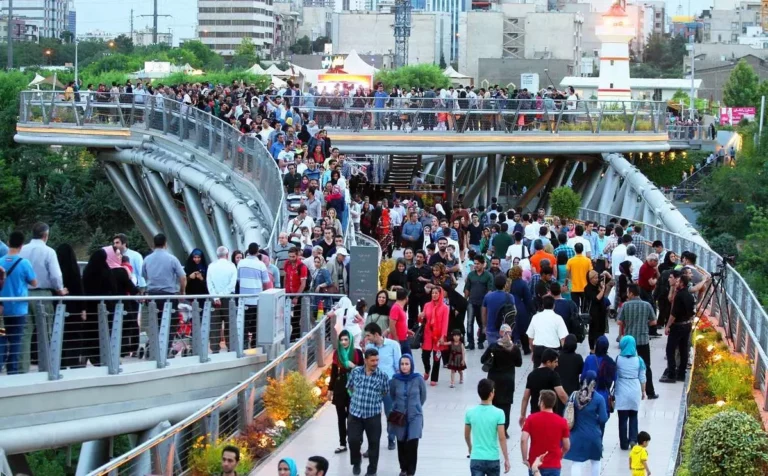Introduction
As companies around the globe look to expand their horizons, Iran presents a unique and dynamic market that is rich in potential. Understanding the intricacies of Iranian consumer behavior is crucial for foreign businesses aiming to establish a foothold in the region. This article explores the key trends, preferences, and characteristics that define Iranian consumers, providing valuable insights for businesses looking to enter this vibrant market.
1. Demographic Overview
Iran is home to a population of over 85 million people, characterized by a young demographic. The majority of the population is under 35 years old, leading to a consumer base that is increasingly tech-savvy, trend-conscious, and eager to engage with global brands. Understanding demographic trends is vital for tailoring products and marketing strategies effectively.
Key Demographic Trends:
- Urbanization: A significant portion of the population is concentrated in urban areas, with Tehran being the largest city. Urban consumers tend to have higher disposable income and different shopping habits compared to rural consumers.
- Higher Education Levels: With a focus on education, many young Iranians hold university degrees, influencing their purchasing decisions towards quality and brand reputation.
2. Consumer Preferences and Behaviors
Iranian consumers exhibit distinct preferences shaped by cultural, economic, and social factors. Understanding these behaviors is critical for market success.
Key Consumer Preferences:
- Local vs. International Brands: While there is a strong preference for trusted local brands, international brands are gaining popularity, especially among younger consumers seeking quality and modernity.
- Quality Over Price: Iranian consumers are increasingly valuing quality over affordability. Brands that emphasize durability and superior craftsmanship tend to attract more loyal customers.
- Health and Wellness: There is a growing awareness of health and wellness among Iranian consumers, leading to higher demand for organic, natural, and health-focused products.
Shopping Habits:
- Shift to E-commerce: The rise of internet penetration has significantly impacted shopping habits. Online shopping, especially in sectors like electronics, fashion, and groceries, is becoming popular, driven by convenience and competitive pricing.
- Social Media Influence: Social media platforms, particularly Instagram and Telegram, play a significant role in influencing purchasing decisions. Brands can leverage these platforms for marketing and engagement.
3. Cultural Influences on Consumer Behavior
Iranian culture is rich and diverse, deeply rooted in traditions and values that influence consumer behavior.
Understanding Cultural Nuances:
- Family-Centric Values: The family unit plays a significant role in purchasing decisions, with many consumers seeking products that cater to their family’s needs.
- Religious Considerations: With a predominantly Muslim population, businesses must consider religious observances, such as Ramadan, which can influence buying behavior, especially regarding food and apparel.
Celebration and Gifting:
- Cultural Celebrations: Events such as Nowruz (Persian New Year) and other cultural festivities lead to spikes in consumer spending on gifts, clothing, and home goods. Understanding these seasonal trends can provide businesses with critical insights into consumer purchasing patterns.
4. Economic Factors Impacting Consumer Behavior
Iran’s economic landscape, shaped by various factors including sanctions and domestic policies, has a direct impact on consumer spending.
Current Economic Trends:
- Inflation and Purchasing Power: High inflation rates have affected purchasing power, leading consumers to be more discerning about their spending. Consumers are more cautious, often prioritizing essential goods over luxury items.
- Currency Fluctuations: The volatility of the Iranian rial significantly influences consumer behavior. Many consumers prefer purchasing foreign goods as a hedge against inflation, making currency dynamics crucial for foreign businesses.
5. Market Opportunities
Given the unique characteristics of Iranian consumers, several opportunities exist for foreign businesses:
Key Opportunities:
- Consumer Technology: The burgeoning tech-savvy youth market opens avenues for tech products and services, particularly in online retail and mobile applications.
- Health and Beauty Products: Growing awareness of personal care and wellness creates a demand for high-quality health and beauty products.
- Food and Beverage: The diversity of Iranian cuisine presents opportunities for foreign food and beverage brands, particularly those offering organic, premium, and convenience-focused products.
Learn more about all IRAN Business Gate services. Click here for detailed information!
Conclusion
Understanding the landscape of Iranian consumers is essential for any foreign business considering entry into this intriguing market. By recognizing the key demographic trends, consumer preferences, cultural influences, and economic realities, businesses can tailor their strategies to meet the unique needs of Iranian consumers.
At Iran Business Gate, we are committed to supporting those interested in entering the Iranian market. Our services include market research, consumer insights, and strategic guidance tailored to help you understand and succeed in the Iranian business environment. Partner with us to navigate the complexities and unlock the potential of Iranian consumers—together, we can pave the way for your successful venture into Iran!
Let's Talk Now!
Your thoughts and questions matter to us! At IRAB Business Gate, we are eager to hear from you.



